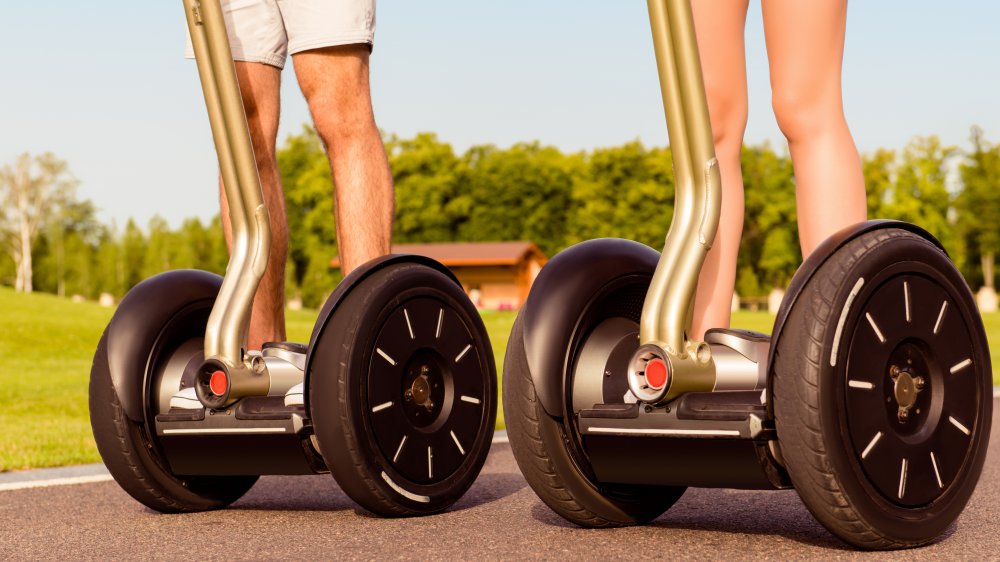The Untold Truth Of The Segway
For the sake of argument, let's just ignore all the dystopian timelines for the moment. Ignore Skynet and Terminators. Think progress. Like the Disney song says, "There's a great big beautiful tomorrow just a dream away." Flying cars. Food that magically appeared, whatever you ordered. Flash Gordon and Buck Rogers (we'd even settle for Duck Dodgers) and if not Star Trek's transporters, at least jet packs. Let's face it: We've been cheated.
And then came Segway. The gadget — a "revolution" in transportation, said some — was introduced in December 2001, relates CNN. It was battery-powered, two-wheeled, self-balancing personal transportation, and would end up replacing cars, said inventor Dean Kamen. Why use all those pounds of steel and gasoline for a short trip when you could manage it with the Segway HT (Human Transporter, later the Personal Transporter, or PT, says NPR)?
Kamen had some credibility going for him. As an engineer, he'd revolutionized dialysis and wheelchairs (his could climb stairs), says Encyclopedia Britannica. Other tried-and-true geniuses backed him up; Steve Jobs predicted the Segway would be bigger than the PC, per Fast Company. NPR adds that Jeff Bezos said the new device was "one of the most famous and anticipated product introductions of all time." (Sidenote: the first models were sold through Amazon.)
The device really was designed to last
The name itself came from the word segue, says the company's website — "to transition smoothly from one state to another." When the product was introduced on Good Morning America, Kamen declared that the Segway would do for walking what the calculator had done for pencil and paper, said CNN. Maybe that was part of the problem — walking is a great way to exercise, especially for short jaunts that don't actually require a car. The Segway did prove popular with law enforcement and security agencies, but never really took off among the general public.
Some say that's because the product was too successfully designed and constructed, which is good for the consumer, but not for a company trying to move multiple units. "I talk to customers riding [an old] unit," says company president Judy Cai in Fast Company. "It doesn't look good because it's been on the road 12 years. It has 100,000 miles on it. But the machine itself runs very well." Whatever the reasons, the PT has been retired as of July 15, 2020.

